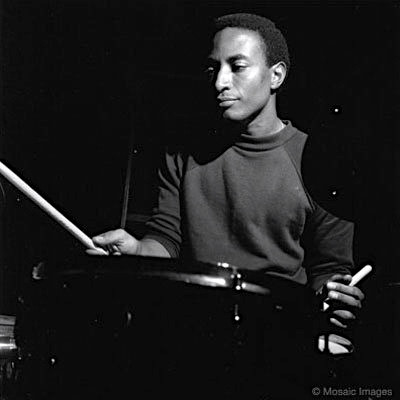When you hear the opening bars of “Dancing in the Street,” you’re instantly transported to a place of vibrant energy and infectious rhythm. Martha and the Vandellas’ 1964 hit is more than just a song; it’s a cultural touchstone. But beneath the surface of this classic track lies a fascinating story of musical innovation and the unsung heroes who brought it to life. Surprisingly, one of those heroes was drummer Freddie Waits, not traditionally associated with Motown but instrumental in crafting the song’s distinctive beat. Let’s delve into how “Dancing in the Street” became the iconic song we know and love.
 freddie-waits
freddie-waits
The journey of “Dancing in the Street” began with songwriter Ivy Jo Hunter, who was new to Motown in early 1964. Hunter, in his own words, described his songwriting process as starting with the bass line on the keyboard. For this particular song, he locked into a pulsating, repetitive bass figure, an octave jump between his pinky and thumb. This foundational bass line was the bedrock upon which the entire song was built. Hunter then developed the melody and chords, setting the stage for the song to take shape.
Paul Riser, the Motown arranger, then entered the picture. Riser’s role was to enrich and expand upon Hunter’s initial ideas. He created a basic chord chart for the legendary Funk Brothers, Motown’s in-house rhythm section. Riser understood the magic of the Funk Brothers: give them a foundation, and they would build something extraordinary. The studio session brought together Earl Van Dyke on keyboards, guitarist Robert White, bassist James Jamerson, and crucially, drummer Freddie Waits. Riser emphasized the importance of the drums and bass, stating they “always set the feel for a Motown song.” This highlights the foundational role of the rhythm section, particularly Waits’ drumming, in shaping the track’s unique identity.
 myers_marc_anatomy_of_a_song
myers_marc_anatomy_of_a_song
Hunter’s vision for the rhythm track was clear: he needed a taped rhythm bed to write lyrics to. The Funk Brothers, guided by Riser’s arrangement, laid down the music, imbuing it with their signature flair. The result was, in Hunter’s words, “always something great.” “Dancing in the Street” departed from the typical Motown sound, which was often based on the Charleston rhythm. Instead, it evoked the powerful imagery of a “freight train with a heavy backbeat.” This description perfectly captures the song’s driving, relentless energy, a key element that made it stand out.
Further enhancing the track was co-writer and producer William “Mickey” Stevenson’s production ingenuity. He layered percussion elements, including claves on the off-beats and Jack Ashford’s emphatic tambourine hits on the second and fourth beats, using a drum stick for added sharpness. To amplify the tambourine’s impact, Stevenson ingeniously used the studio’s echo chamber – a hole in the bathroom wall. By re-recording the tambourine track and capturing its reverberation off the tiled wall, he created an even bigger, more resonant dance beat. This innovative technique contributed significantly to the song’s powerful, danceable groove.
“Dancing in the Street” is a testament to the collaborative genius of songwriters, arrangers, producers, and the exceptional musicianship of the Funk Brothers, including the unexpected contribution of Freddie Waits on drums. Their combined efforts resulted in a song that not only defined an era but continues to inspire and energize listeners today, proving its enduring power as a timeless dance anthem.
